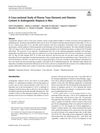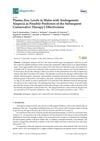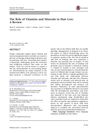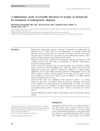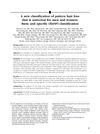Parietal and Occipital Hair Loss Patterns in Initial Stages of Androgenic Alopecia in Men
May 2023
in “
Vestnik dermatologii i venerologii
”

TLDR Early-stage male pattern baldness shows two types of hair loss: one on the top of the head linked to hormonal changes, and another at the back of the head. The top hair loss responds well to specific treatment, while the back hair loss does not.
The document "Parietal and Occipital Hair Loss Patterns in Initial Stages of Androgenic Alopecia in Men" presents multiple studies investigating early-stage male pattern baldness, focusing on hair loss in the parietal (top) and occipital (back) regions of the scalp. The studies involved a total of 547 men aged between 20 and 40 years, all diagnosed with initial stages of androgenic alopecia. The research identified two patterns of hair loss: one associated with hair density and diameter in the parietal area, and another associated with hair diameter in the occipital area. Hormonal factors, specifically increased dihydrotestosterone levels and decreased total testosterone levels, were found in patients with the parietal hair loss pattern. In contrast, patients with the occipital pattern showed a moderate increase in 17-OH-progesterone levels. The studies concluded that these two patterns of hair loss have different characteristics, pathogenesis mechanisms, and responses to conservative therapy, with the parietal pattern responding well to treatment with 5% minoxidil and personalized micronutrient correction, while the occipital pattern did not.
